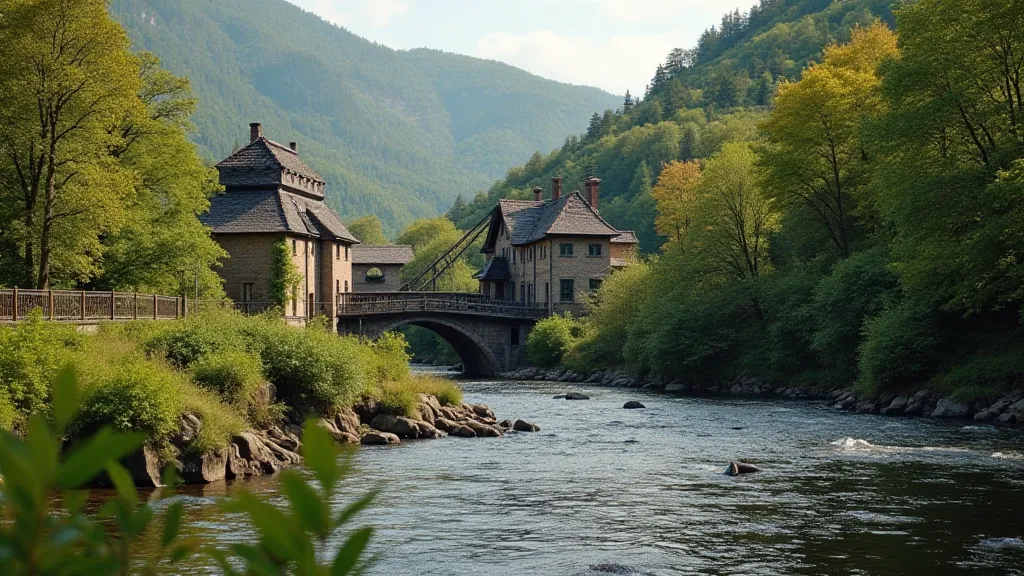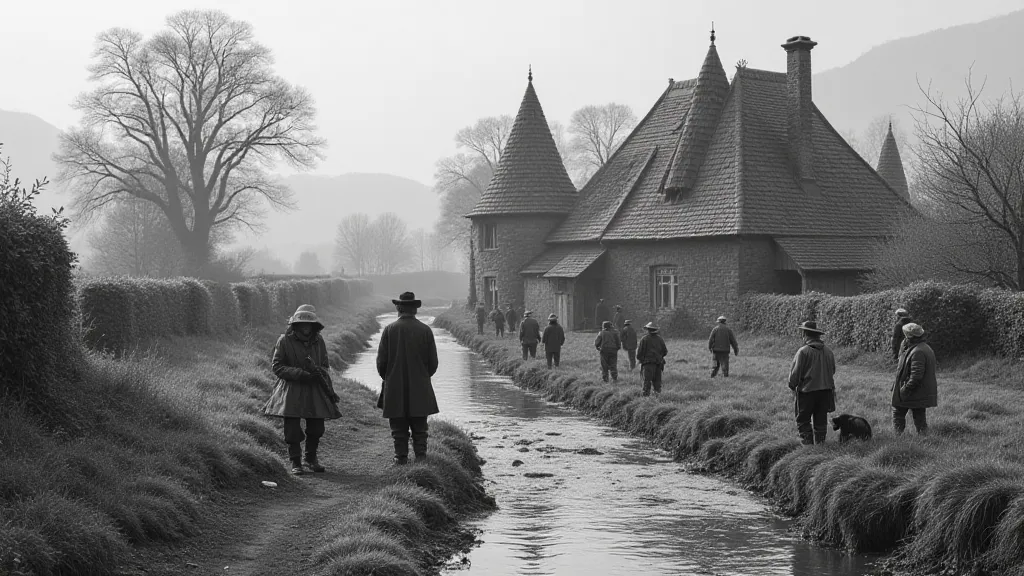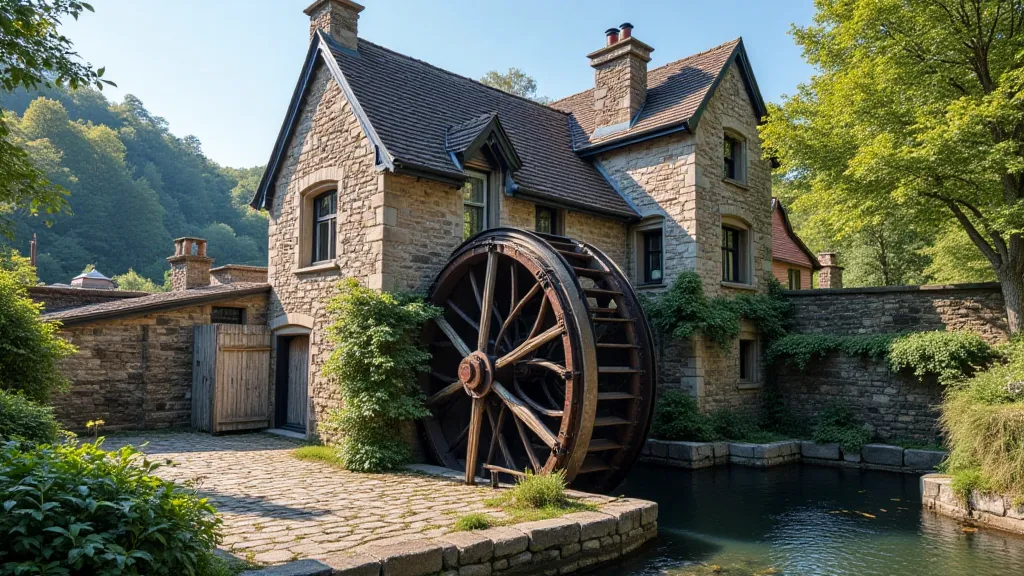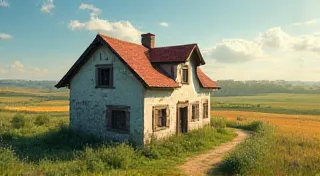The Old Mill: Powering the Region for Generations
The Old Mill stands as a silent sentinel, a tangible link to the region’s vibrant and industrious past. More than just a building, it represents a critical engine of growth, a cornerstone of the community’s early development. This article delves into the rich history of this beloved local landmark, exploring its original purpose, the ingenious technology it employed, and its profound impact on the people who called this region home.
Early Days: A Need for Power
The story of the Old Mill begins in [Year - e.g., 1848], a period marked by rapid expansion and increasing demand for manufactured goods. Prior to its construction, [Specific local industry - e.g., lumber, grain production] relied heavily on manual labor, a slow and often inefficient process. The availability of the [River/Stream Name] presented an ideal opportunity to harness the power of water, offering a reliable and sustainable energy source. Local entrepreneurs, led by [Name of Founder(s)], recognized this potential and initiated the ambitious project of building a grist mill. The growth of the community brought many needs, and the success of the Old Mill often mirrored the success of other crucial businesses that sprang up to serve the burgeoning population. Think about the vital role played by the merchant's store, which served as a central hub for goods and trade – both businesses were essential to the region’s prosperity. The early settlers faced numerous challenges, and the establishment of reliable trade routes, such as those served by the merchant’s store, was crucial for the survival and growth of the community.

The Technology of Innovation
The Old Mill’s design incorporated cutting-edge technology for its time. The primary mechanism was an undershot water wheel, a robust and efficient system that utilized the force of the flowing water to rotate the wheel and drive the millstones. The millstones themselves, crafted from locally quarried [Type of Stone - e.g., granite], were meticulously shaped to grind [Type of Grain - e.g., wheat, corn] into flour, a vital food source for the burgeoning population. The mill also included a complex system of chutes, conveyors, and sorting mechanisms, designed to streamline the milling process. Early modifications to the mill included the addition of a [Type of Equipment - e.g., saw, sifter] to accommodate broader industrial needs. The logistical challenges of transporting goods and materials to the mill were significant; the development of infrastructure like the railway station played a crucial role in facilitating this process and enabling wider distribution of the mill’s products. Without efficient transport, even the most innovative milling technology would have been severely limited in its reach. The impact extended beyond simply delivering flour; it influenced the broader development of the region’s economy and infrastructure.
A Hub of Community Life
The Old Mill’s importance extended far beyond its industrial function. It served as a social hub for the community. Farmers would bring their grain to be milled, often staying to exchange news and socialize. It was a place where people from different backgrounds came together, fostering a sense of shared identity. The miller, [Name of Miller], often played a vital role, acting as a trusted advisor and community leader. Local trade flourished around the mill, with businesses supplying the miller with necessary materials and providing services to those visiting the site. The mill provided essential jobs, not only for the miller and his family but also for laborers who operated the machinery and maintained the building. The very fabric of community life was interwoven with the routines and rhythms of the mill. Consider how integral institutions like the St. Michael's Church were to the spiritual and moral well-being of the area; the mill’s influence extended to all aspects of local life. Regular church attendance and participation in community events were integral to the social structure, and the mill's presence reinforced these shared values.

The Impact of Infrastructure and Communication
The isolation of the region meant that communication and the movement of goods were significant hurdles to overcome. Before the construction of the mill, letters and vital information often took weeks or even months to reach families. The eventual establishment of the old post office drastically reduced these delays, allowing for closer connections and quicker dissemination of news – a welcome relief for the community relying on the mill for sustenance and trade. The improved communication facilitated by the post office wasn’t merely about personal correspondence; it was critical for the efficient management of businesses like the mill, allowing for timely ordering of supplies and distribution of finished goods. Furthermore, the ability to quickly share information fostered a stronger sense of community, allowing news and innovations to spread rapidly.
The Mill’s Role in Daily Life – Beyond Flour
While the primary function of the Old Mill was to grind grain into flour, its influence extended far beyond just providing food. The mill served as a source of power for various other operations, driving saws for lumber production, providing energy for workshops, and facilitating a ripple effect of economic activity throughout the region. The ability to harness water power meant that local artisans and craftsmen could establish their businesses, attracting skilled workers and further stimulating the local economy. The mill's presence attracted a diverse range of individuals – not just farmers and millers, but also carpenters, blacksmiths, and shopkeepers – all contributing to the vibrant tapestry of community life. The skills and expertise of these artisans were crucial to the overall success of the region, transforming raw materials into valuable finished products. The mill fostered a synergistic relationship, where the needs of one industry fueled the growth of others.
Decline and Preservation
The advent of electricity and the construction of larger, more modern milling facilities gradually diminished the Old Mill’s role in the region’s industrial landscape. By [Year of Decline - e.g., 1920], it ceased operations as a commercial mill. Over time, the building fell into disrepair, threatened by neglect and the elements. Fortunately, a collective effort by local historians and community members led to its preservation in [Year of Preservation - e.g., 1980]. The building was meticulously restored, showcasing its original architecture and offering a tangible connection to the region’s past. The restoration project itself became a significant community undertaking, involving skilled craftspeople who ensured the building’s structural integrity while preserving its historical charm. The preservation wasn't simply about saving a building; it was about safeguarding a collective memory and reaffirming the community's commitment to its heritage.

The Stories Within the Stones
Restoration efforts weren't solely about preserving the physical structure of the Old Mill; they were about safeguarding the countless stories embedded within its stones and timbers. Oral histories, passed down through generations, revealed the struggles and triumphs of the families who depended on the mill for their livelihoods. These stories highlighted the strong sense of community that bound the region together, forged in the shared experience of hard work and resilience. The mill became more than just a building; it was a symbol of their collective identity, a reminder of their heritage, and a source of pride for the entire region. These accounts often spoke of hardship and resilience, painting a vivid picture of life in a time when the mill was the heart of the community. Understanding these narratives is crucial to appreciating the full significance of the mill's legacy.
A Living Legacy
The Old Mill is more than just a building; it’s a symbol of the region’s enduring spirit. It stands as a vital local landmark, reminding us of the history of hard work, innovation, and community that shaped this area. Efforts continue to ensure the Old Mill's preservation for future generations, so that they too may appreciate its significant contribution to the region's story. The mill serves as a living testament to the power of water, the importance of community, and the enduring legacy of those who came before us. The stories shared about the mill during tours and events help connect visitors to the past, fostering a deeper understanding of the region’s identity.
Educational programs and guided tours have been established to share the history of the Old Mill with visitors from all walks of life. These initiatives not only educate people about the region’s past but also inspire a sense of connection to the area and appreciation for its unique heritage. The Old Mill stands as a powerful reminder of the importance of preserving our history and celebrating the stories that shape our communities.





